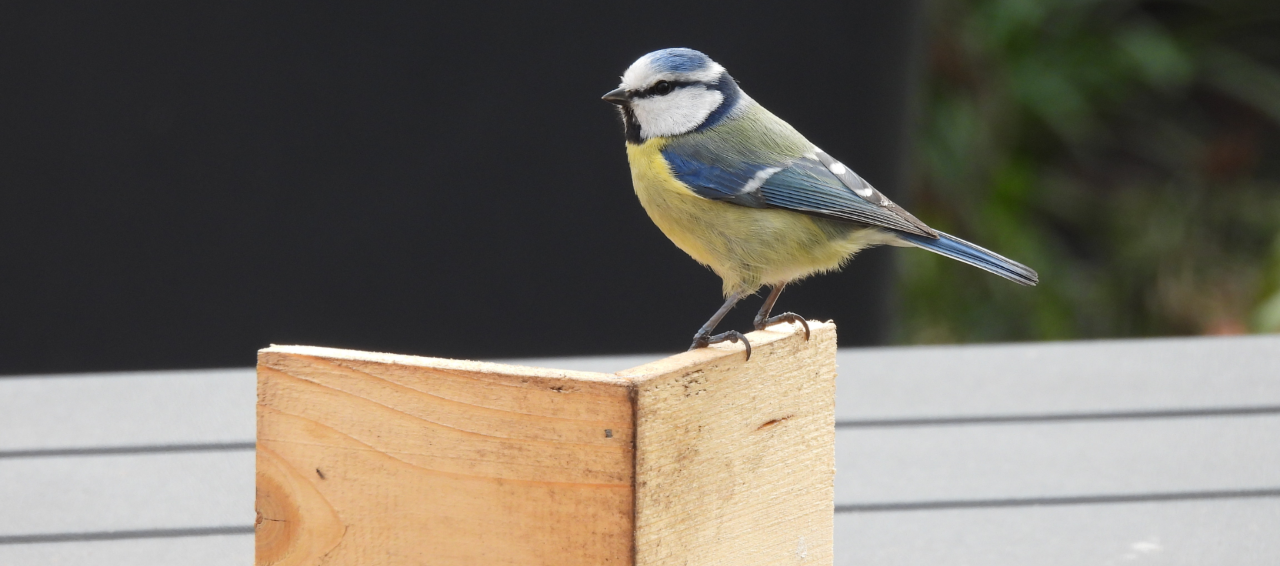Big new markets for small and robust NFC glass tags
A new, robust NFC glass tag with one of the smallest form factors in the global marketplace offers embedded tagging to a wide range of new industry segments and applications.

June 24, 2021
Selecting the right partner is vital not only for humans but also for wild songbirds. Feeding up to 10 hungry chicks requires great teamwork but songbirds are known to switch between monogamous partnerships and pick new breeding partners, so ascertaining the best strategy for reproductive success isn’t always clear.
These are interesting questions for biologists and bird watchers alike but despite decades of research a lot of them remain answered. That’s why the Max Planck Institute (MPI) for Ornithology started a research project to study blue tits which are known to form socially monogamous pairs, but also prone to frequently engage in extra-pair mating.
To obtain the data, the MPI installed the “Animal Presence RFID Data Logger”, a self-designed, custom-built automated monitoring system to document the behavior of animals. The system included 20 feeders and 277 nest-boxes in a forest study site in Southern Germany. The researchers quantified the birds’ social associations during foraging events at local bird feeders and while visiting nest-boxes during winter.

The animals are equipped with Avery Dennison Smartrac’s ultra-robust Glass Tag Animal ID, an injectable, passive low frequency (134.2kHz) transponder with the size of a grain of rice (1,41x8,3mm). Avery Dennison Smartrac is one of the three largest glass tag providers in the world. Around 30% of an estimated 110 million newborn cats and dogs globally are ‘chipped’ with an RFID transponder for identification purposes. In the MPI project each transponder has an individual code activated externally by the reader device in the feeder or nest-box which uniquely identifies each bird.
With this RFID-system in place, the researchers could record the date, time, and identity of every tagged blue tit visiting. Whenever an individual with a Glass Tag crossed a tunnel equipped with readers, the reader wrote the animal ID and time data to an SD card.
This data enabled the researchers to create a social network to visualize who hangs out with whom and how often. They found that 39% of the birds present in the study site in winter bred in the subsequent spring. Nearly all social breeding pairs were formed by the individuals present during winter and those that foraged more often together were also more likely to end up as breeding pairs.
“We established an efficient system to monitor and control animal behavior in the wild as well as in laboratory settings. Thanks to passive RFID the research team could realize an innovative research method that generates higher data volumes and is less energy consuming.” — Peter Loës, Project Engineer at Max Planck Institute of Ornithology.
Video recordings and observations have long been used by biologists to study animals and to obtain answers about territory distribution, social or breeding behavior. However, these methods are time-consuming, often error-prone and cannot be used in poor visibility conditions, especially at night.
Peter Loës, project engineer at Max Planck Institute of Ornithology said: “We established an efficient system to monitor and control animal behavior in the wild as well as in laboratory settings. Thanks to passive RFID the research team could realize an innovative research method that generates higher data volumes and is less energy consuming.”
What sounds like a small step for a songbird might be a big step for animal research.
For more information, please reach out to our sales team.
The Max Planck Institute of Ornithology is happy to share its open source technologies:
|
A new, robust NFC glass tag with one of the smallest form factors in the global marketplace offers embedded tagging to a wide range of new industry segments and applications.
For animal breeders and livestock owners, RFID-enabled tags provide convenience and reliability – features that Avery Dennison Smartrac is taking to a new level with its innovative Cattle Ear Tag using the RAIN RFID (UHF) standard. Offering superior read range through RFID technology, and outstanding ruggedness through its advanced antenna design, the new tag is set to make its mark in the animal ID market.
Avery Dennison Smartrac’s new Intrace Cannula product is a complete, self-contained microchip transponder implanting system that will make pet ID tagging much easier, more animal-friendly and more efficient – offering significant benefits to pet owners and implant practitioners.